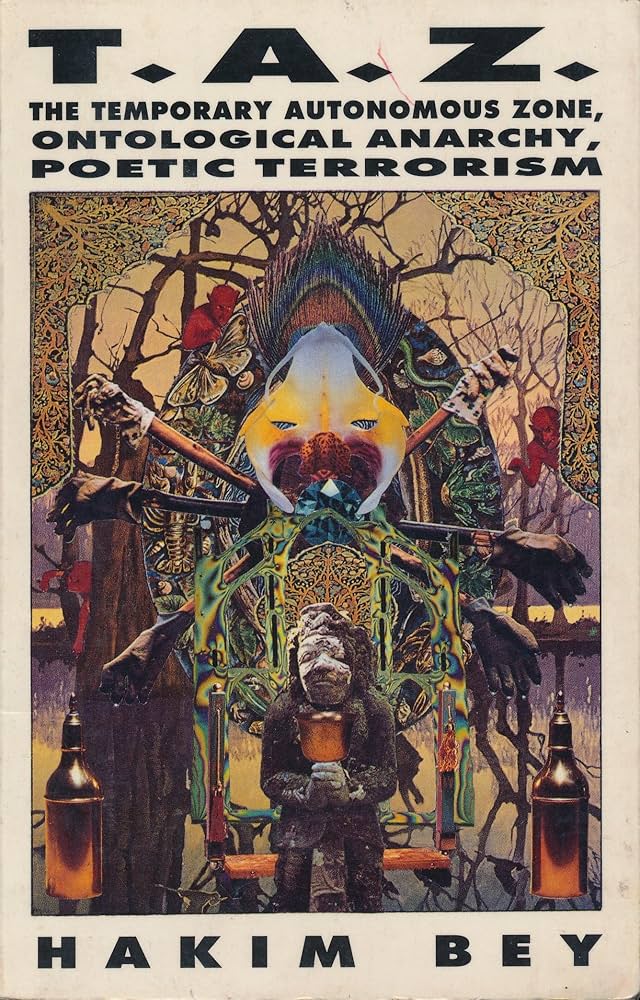The Temporary Autonomous Zone is a 1991 manifesto by writer and poet Hakim Bey (pseudonym of Peter Lamborn Wilson). The book proposes that freedom can be practiced in temporary, ephemeral spaces that slip through the grasp of state power and market control. Rather than waiting for a revolution that may never arrive, Bey suggests that autonomy already exists in pockets and moments—pirate utopias, clandestine gatherings, underground raves, festivals, or any collective act that creates a space of liberation before it is recuperated.
The text blends anarchism, Sufi mysticism, cyberculture, and Situationist thought. It resists rigid blueprints, instead encouraging spontaneity, immediacy, and improvisation. A TAZ is not a permanent institution but a fleeting constellation: it appears, thrives briefly as a site of intensity and connection, and then dissolves before authority can solidify control.
Bey insists that autonomy is not only a distant horizon but something that can be enacted now, in gatherings that privilege joy, relation, and experiment over efficiency or permanence. Though written in the early 1990s, the text continues to reverberate in movements that imagine politics as celebration and community as a form of resistance.

Image from Amazon.


